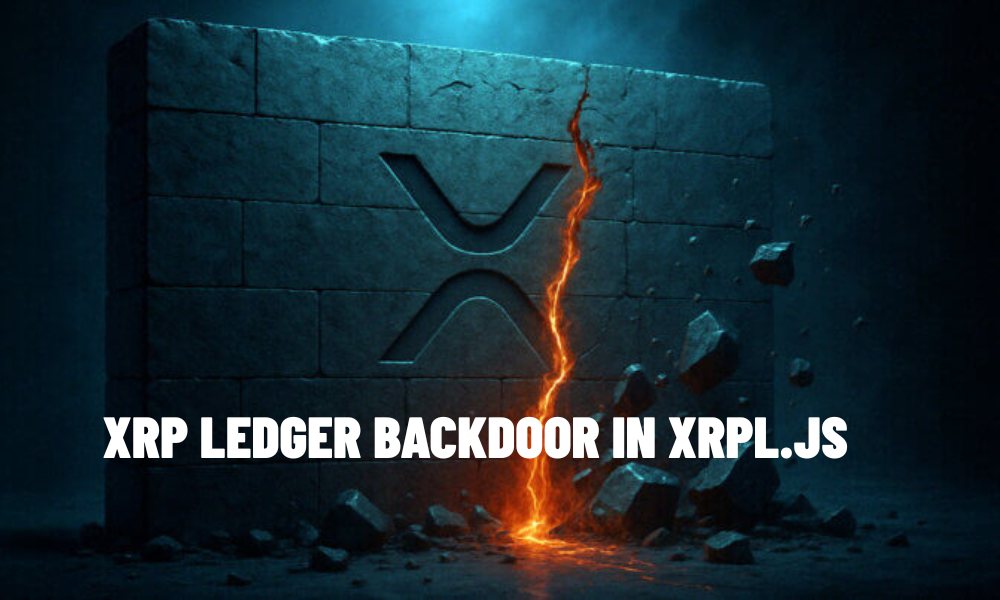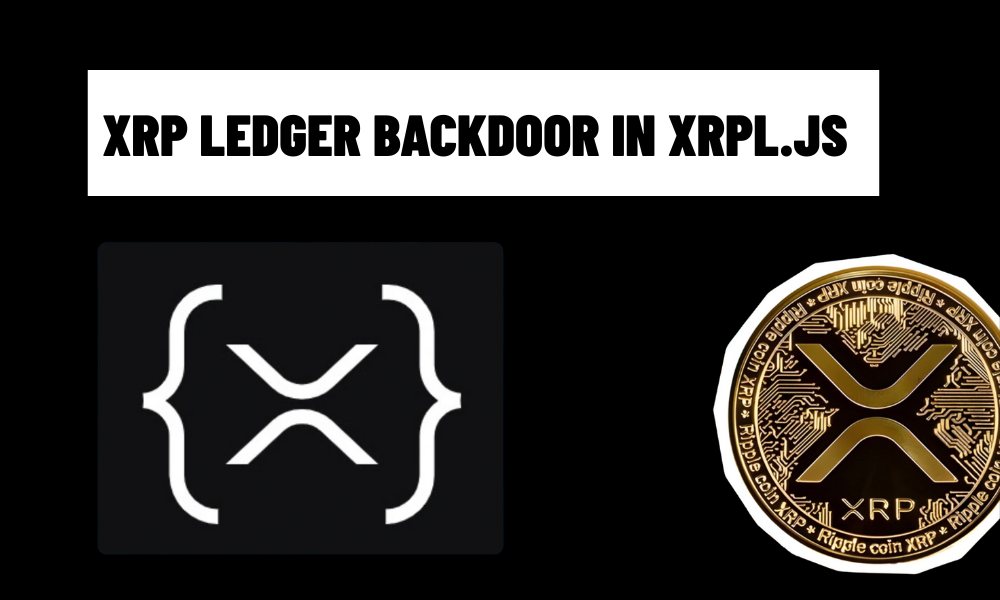The XRP Ledger, a cornerstone of decentralized finance (DeFi) and cross-border payments, recently uncovered a critical security flaw in its widely used xrpl.js library. With over 140,000 weekly downloads, this library is a vital tool for developers building on the XRP Ledger. The discovery of a malicious backdoor capable of stealing private keys sent shockwaves through the community, highlighting the importance of robust security practices in blockchain. In this article, we break down the incident, its impact, and practical steps to safeguard your XRP assets.
Understanding the xrpl.js Backdoor
The xrpl.js library, designed to simplify interactions with the XRP Ledger, was found to contain a backdoor in its recent updates. This malicious code could extract private keys, granting attackers full control over affected wallets and enabling unauthorized transactions. Given the library’s popularity, the vulnerability posed a systemic risk to decentralized applications (dApps), exchanges, and individual users.
The XRP Ledger Foundation acted swiftly, identifying the issue, releasing a patched version of xrpl.js, and urging the community to upgrade immediately. Their transparent and decisive response mitigated the threat, but the incident raises important questions about security in the blockchain ecosystem.

The Impact on the XRP Ecosystem
The xrpl.js backdoor could have led to significant consequences, including:
-
Financial Losses: Stolen private keys could result in drained wallets, impacting individual users and institutional players.
-
Erosion of Trust: A successful exploit might have undermined confidence in the XRP Ledger, a blockchain known for its reliability.
-
Developer Liability: Projects using the compromised library could face reputational and legal challenges if user funds were lost.
Fortunately, the XRP Ledger’s proactive measures prevented widespread damage, reinforcing its reputation as a secure and resilient blockchain.
Key Lessons for the Crypto Community
The xrpl.js incident offers valuable insights for developers, investors, and blockchain enthusiasts:
-
Dependency Risks: Third-party libraries, even those widely trusted, can be vectors for attacks. Regularly auditing dependencies is critical.
-
Rapid Response Matters: The XRP Ledger Foundation’s quick action minimized harm, highlighting the importance of agile security protocols.
-
User Responsibility: Both developers and end-users must stay vigilant, updating software and monitoring for suspicious activity.
This incident also underscores the growing sophistication of supply chain attacks in crypto, where attackers target tools and infrastructure rather than individual wallets.
How to Protect Your XRP Assets
Whether you’re a developer building on the XRP Ledger or an investor holding XRP, here’s how to stay safe:
For Developers
-
Upgrade to the Latest xrpl.js: Immediately update to the patched version of the library. Verify the package using official checksums from the XRP Ledger Foundation.
-
Conduct a Security Audit: Review your codebase for vulnerabilities and check for signs of compromise in systems using older xrpl.js versions.
-
Implement Dependency Monitoring: Use tools like Dependabot or Snyk to track and secure your project dependencies.
-
Adopt Secure Practices: Minimize reliance on external libraries and implement code signing to ensure package authenticity.
For Users
-
Check Your Platforms: If you use exchanges, wallets, or dApps built on the XRP Ledger, confirm with their support teams that they’ve updated to the secure xrpl.js version.
-
Secure Your Private Keys: Store private keys offline using hardware wallets like Ledger or Trezor. Avoid sharing keys with unverified software.
-
Monitor Wallet Activity: Use blockchain explorers like XRP Scan to track your transactions and detect anomalies.
-
Enable Two-Factor Authentication (2FA): Add an extra layer of security to your accounts on exchanges and wallet providers.

The Bigger Picture: Strengthening Blockchain Security
The xrpl.js backdoor is a reminder that blockchain security is a shared responsibility. Developers must prioritize secure software development lifecycles (SDLC), including regular code audits and penetration testing. Meanwhile, the industry should explore innovations like decentralized package registries and immutable dependency verification to reduce reliance on centralized repositories.
For users, adopting a security-first mindset is non-negotiable. By combining best practices like cold storage, multi-signature wallets, and regular software updates, you can significantly reduce your risk exposure.
Conclusion
The xrpl.js backdoor incident, while alarming, demonstrates the resilience of the XRP Ledger and its community. By addressing the vulnerability swiftly, the XRP Ledger Foundation protected users and reinforced trust in the ecosystem. For developers and investors, this serves as a call to action: stay proactive, update your tools, and prioritize security in every interaction with blockchain technology.
Protect your XRP assets today by taking the steps outlined above and staying informed about the latest developments in crypto security.
